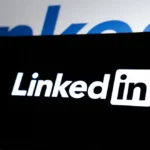Right, so, I had a proper chinwag with Dominic the other day about something that’s been buzzing in my head – how to use Facebook Messenger for customer service and, you know, actually get more business through it. It’s not just about replying to messages; it’s about creating an experience. Dominic’s a whizz with this stuff, so I picked his brain. Let’s dive in.
First Things First: AI-Powered First Line of Defence
Dominic reckons the key is to think about Messenger chatbots as your front-line troops. Imagine your customer support team, but they work 24/7 and never need a coffee break. These aren’t just for simple “hello” and “goodbye” responses. We are talking about using AI, and natural language processing (NLP), to understand what customers are actually asking.
How to Actually Do This (the technical bit, simplified):
- Choose a Chatbot Platform: Loads out there! Chatfuel, ManyChat, Dialogflow (Google’s offering) – do your research. Most offer drag-and-drop interfaces, so you don’t need to be a coding genius.
- Map Out Common Questions: Think about the questions your customers ask all the time. Shipping costs? Return policies? Product availability? Write these down.
- Train Your Chatbot: This is where NLP comes in. You feed the chatbot examples of the questions and the correct answers. The more examples, the better it gets at understanding variations in how people ask things (e.g., “How much to post this?” vs. “What are your delivery charges?”).
- Sentiment Analysis: This is next level. The chatbot can detect if someone is getting frustrated and automatically escalate the conversation. This is the point at which a customer moves from the chatbot to a real human agent for help.
Seamless Handover: The Key to Happiness
This is where things get really interesting. Chatbots are brilliant for handling volume, but they can’t solve everything. Dominic was insistent on this point: a seamless handover to a live agent is crucial. Think about it: nothing is more frustrating than being stuck in a chatbot loop when you really need a person.
Setting up the Handover:
- Identify Triggers: Program the chatbot to recognize keywords or phrases that signal the need for a human agent (e.g., “I’m really frustrated,” “speak to someone,” “technical issue”).
- Agent Availability: Integrate your chatbot platform with your customer service software. This allows the chatbot to check which agents are available and route the conversation accordingly.
- Context is King: Ensure the live agent receives the entire conversation history from the chatbot. No one wants to repeat themselves!
Engagement and Understanding: Who Are You Talking To?
Dominic stressed the importance of knowing your audience inside and out. You wouldn’t use the same language with teenagers as you would with pensioners, right? Your chatbot should reflect your brand’s personality but also resonate with your target demographic.
Getting to Know Your Audience:
- Facebook Insights: This is your best friend. Analyse demographics, interests, and behaviour of your Facebook followers.
- Surveys & Polls: Ask direct questions! What are their pain points? What kind of content do they enjoy?
- Monitor Conversations: Pay attention to the language your customers use in their messages and comments.
Innovative Ideas: Facebook is More Than Just a Chatbox
Dominic also had some pretty nifty ideas for using Facebook, besides the chatbot, to bring in new business.
- Facebook Ads with Messenger Integration: Run ads that encourage people to start a conversation with your chatbot. Offer exclusive deals or information in exchange for engagement.
- Click-to-Messenger Ads: These ads direct people straight to a Messenger conversation. Ideal for lead generation.
- Messenger Broadcasts: Send targeted messages to your subscribers (like an email newsletter, but within Messenger). Share updates, promotions, or valuable content.
The Future is Now: Chatbots are Getting Smarter
Dominic painted a picture of a future where chatbots are even more integrated into the customer journey. He predicts advancements in:
- Proactive Chatbots: Chatbots that can anticipate customer needs based on their past behaviour or browsing history.
- Personalized Recommendations: Chatbots that can offer tailored product recommendations based on individual preferences.
- Voice-Activated Chatbots: The rise of voice assistants means chatbots will likely become even more accessible.
He was clear that it is not about replacing the human element, but about freeing up human agents to handle more complex and meaningful interactions. The best customer service combines the efficiency of AI with the empathy of a human touch.
So what’s the takeaway? Start small, test, analyse, and constantly refine your approach. Messenger chatbots aren’t a magic bullet, but they can be a powerful tool for improving customer service, generating leads, and ultimately, growing your business. Just remember to keep it human, even when it’s powered by AI. Make sure there is seamless handoff to live agents, and everything will be a success.











